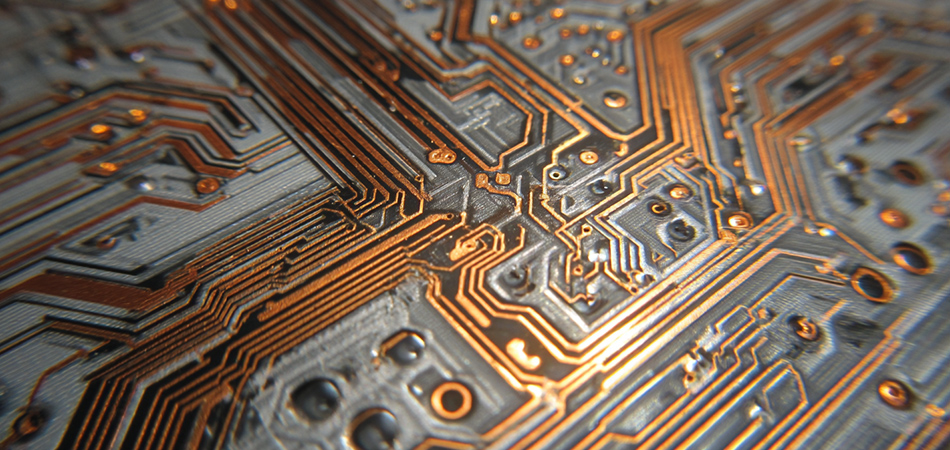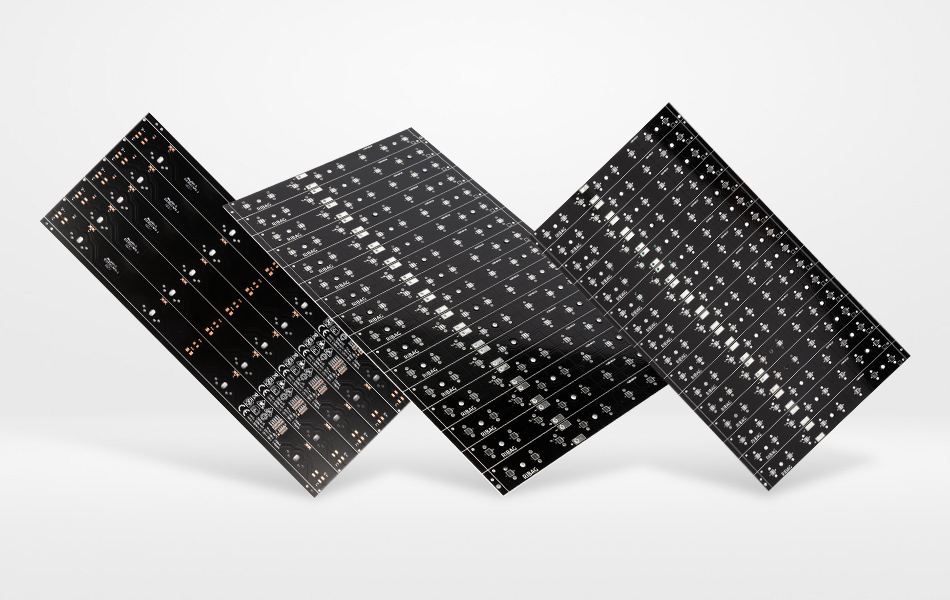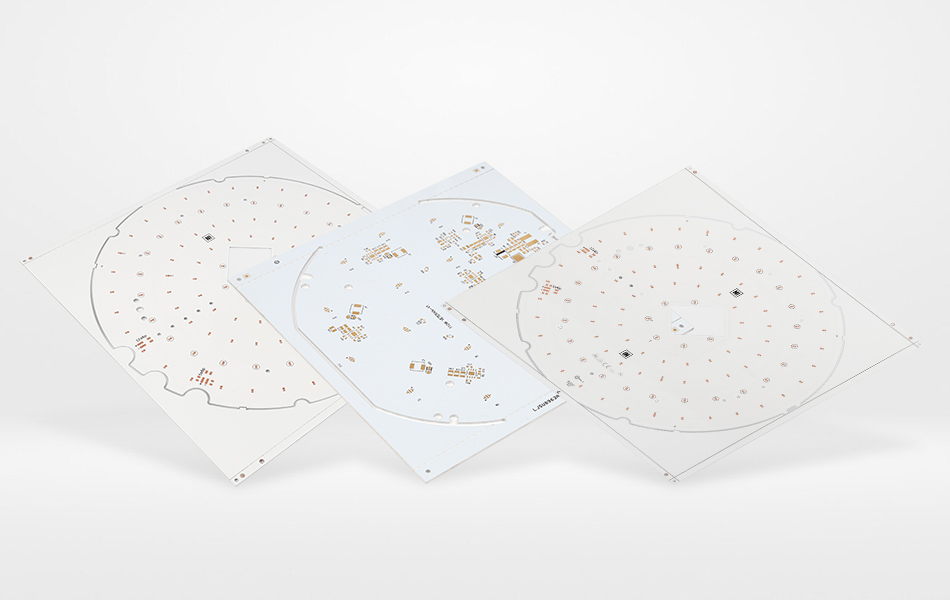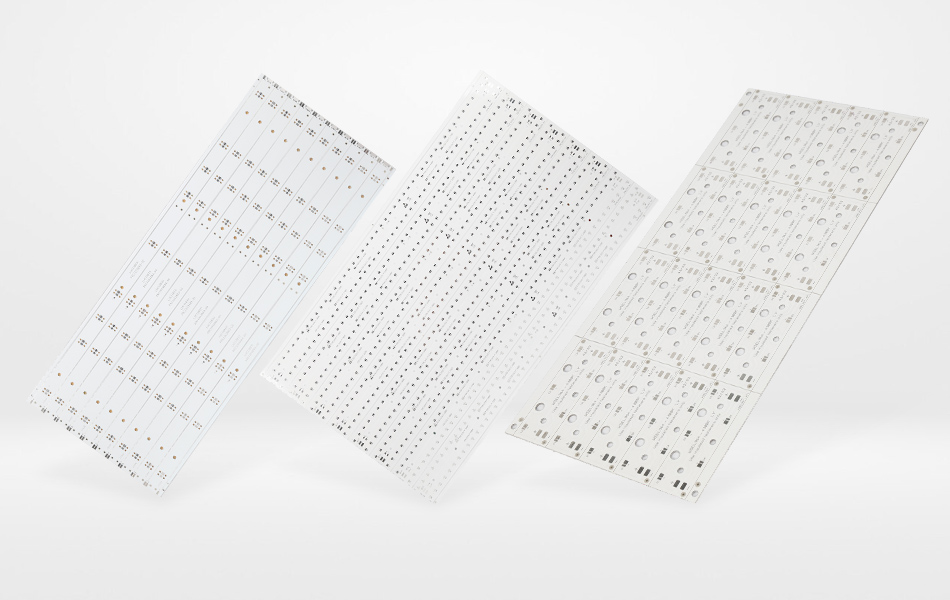-
- PCB TYPE
- PRINTED CIRCUIT BOARD PROTOTYPE ALUMINUM PRINTED CIRCUIT BOARD R&F PCB FPC HIGH FREQUENCY PCB HIGH-TG PCB HEAVY COPPER PCB HDI PCB PCB FOR LIGHTING METAL CORE PCB
time:Jun 19. 2025, 09:11:05
In the ever - evolving world of electronics, the demand for more powerful, compact, and reliable devices continues to surge. As electronic components become increasingly dense and powerful, heat generation has emerged as a significant challenge that can severely impact device performance, reliability, and lifespan. Thermal management has thus become a critical aspect of modern PCB design, and Copper PCBs have proven to be an effective solution due to copper's excellent thermal conductivity properties. Thermal Management Copper PCBs are specifically engineered to address heat - related issues, enabling efficient heat dissipation and ensuring optimal operation of electronic systems. This article explores the intricacies of Thermal Management Copper PCBs, covering their fundamental characteristics, design considerations, manufacturing processes, diverse applications, market dynamics, and future trends.
Understanding Thermal Management Copper PCBs
The Role of Copper in Thermal Management
Copper is renowned for its high thermal conductivity, making it an ideal material for thermal management in PCBs. In a Thermal Management Copper PCB, the copper layer serves multiple functions related to heat transfer. Firstly, it acts as a heat conductor, rapidly absorbing heat generated by components such as integrated circuits, power transistors, and high - brightness LEDs. Once absorbed, the copper layer efficiently spreads the heat across its surface, increasing the surface area available for heat dissipation. This process helps to prevent the formation of hotspots, which can lead to component failure and performance degradation.
Moreover, copper's high thermal conductivity allows for quick heat transfer to heat - dissipating elements, such as heat sinks or cooling fans. By facilitating rapid heat removal from the immediate vicinity of heat - generating components, Thermal Management Copper PCBs can maintain lower operating temperatures, ensuring that components operate within their optimal thermal range. This not only enhances the reliability of the electronic device but also extends its lifespan.
Structure and Types of Thermal Management Copper PCBs
Thermal Management Copper PCBs can come in different structures. One common type is the single - layer copper PCB, where a single copper layer is laminated onto an insulating substrate. In this design, the copper layer directly contacts heat - generating components, enabling efficient heat transfer. Another type is the multi - layer copper PCB, which consists of multiple copper layers separated by insulating dielectric layers. The additional copper layers in multi - layer PCBs can be used for various purposes, such as creating more complex electrical circuits, providing additional heat - conducting paths, or acting as power and ground planes.
In some advanced Thermal Management Copper PCBs, metal - core structures are employed. Here, a metal core, often made of aluminum or copper, is integrated into the PCB. The metal core further enhances the thermal conductivity of the PCB, as it can quickly absorb and distribute heat across a larger area. A thermally conductive dielectric layer is used to separate the metal core from the copper traces, ensuring electrical insulation while facilitating efficient heat transfer.

Design Considerations for Thermal Management Copper PCBs
Component Placement
The strategic placement of components on a Thermal Management Copper PCB is crucial for effective heat dissipation. Heat - generating components should be placed in areas that allow for easy heat transfer. For example, they can be positioned near the edges of the PCB where there is better air circulation, or adjacent to heat - dissipating elements such as heat sinks. Components that are sensitive to heat should be placed away from heat sources to prevent thermal stress and potential damage.
When multiple heat - generating components are present, it is important to consider their heat - generating capacities and distribute them evenly across the PCB. This helps to avoid the concentration of heat in a particular area, which could lead to the formation of hotspots. Additionally, the layout should take into account the direction of air flow in the system, if forced - air cooling is employed, to ensure that the cooling air can effectively remove heat from the components.
Trace Routing and Thermal Vias
In Thermal Management Copper PCBs, trace routing not only affects the electrical performance but also impacts thermal management. Short and direct trace routes are preferred as they reduce the resistance of the copper traces, minimizing power losses that could contribute to heat generation. Moreover, the routing of traces should be planned in a way that does not obstruct the heat - transfer paths.
Thermal vias play a vital role in thermal management. These are small holes filled with a highly conductive material, usually copper, that connect different layers of the PCB. Thermal vias create a direct path for heat to flow from the surface - mounted components to the internal copper layers or the metal core, if present. By strategically placing thermal vias, designers can enhance the heat - transfer efficiency of the PCB, ensuring that heat is quickly dissipated away from the components. The number, size, and location of thermal vias need to be carefully calculated based on the heat - generating capacity of the components and the overall thermal design of the PCB.
Heat Sink Integration
Integrating heat sinks with Thermal Management Copper PCBs is an effective way to enhance heat dissipation. Heat sinks are typically made of materials with high thermal conductivity, such as aluminum or copper, and they increase the surface area available for heat transfer to the surrounding environment. When designing a PCB with heat sink integration, several factors need to be considered.
The size and shape of the heat sink should be selected based on the heat - generating capacity of the components and the available space in the electronic device. A larger heat sink can dissipate more heat, but it may also take up more space. The mounting method of the heat sink is also important. It should ensure a good thermal contact between the heat sink and the PCB, minimizing the thermal resistance at the interface. Thermal interface materials, such as thermal paste or pads, are often used to fill any gaps between the heat sink and the PCB, improving the heat - transfer efficiency.

Manufacturing Processes of Thermal Management Copper PCBs
Material Selection
The manufacturing of Thermal Management Copper PCBs starts with the careful selection of materials. High - quality copper foil is essential for the copper layers, as its purity and conductivity directly affect the thermal and electrical performance of the PCB. The copper foil should have a smooth surface and uniform thickness to ensure consistent heat transfer and electrical conductivity.
For the insulating substrate, materials with good thermal stability and electrical insulation properties are chosen. Common substrate materials include fiberglass - reinforced epoxy resin (FR - 4), polyimide, and ceramic - filled polymers. Each of these materials has its own advantages in terms of thermal conductivity, mechanical strength, and cost. For example, polyimide is known for its high - temperature resistance, making it suitable for applications where the PCB will be exposed to elevated temperatures.
Lamination
Lamination is a critical step in the manufacturing process. It involves bonding the copper foil to the insulating substrate. In the case of multi - layer PCBs, multiple layers of copper foil and insulating substrates are laminated together. The lamination process uses heat and pressure to cure the adhesive or resin between the layers, creating a strong and cohesive structure.
Precise control of the lamination parameters, such as temperature, pressure, and time, is essential to ensure a uniform bond and avoid defects such as voids or delaminations. Any imperfections in the lamination can disrupt the heat - transfer paths and affect the overall performance of the Thermal Management Copper
Drilling and Plating
After lamination, drilling is performed to create holes for vias, component mounting, and electrical connections. High - precision drilling machines are used to ensure accurate hole placement and clean hole walls. Following drilling, the holes are plated with copper to create electrical connections between the different layers of the PCB and to provide a solderable surface for component attachment.
The plating process, often electroplating, requires careful control of parameters such as the current density, plating time, and temperature. A uniform and thick copper deposit is necessary to ensure reliable electrical connections and good thermal conductivity through the vias.
Circuit Patterning
Circuit patterning is the process of creating the electrical circuits on the surface of the copper layer. Photolithography is a commonly used technique for this purpose. A photosensitive resist material is applied to the copper surface, and then a patterned mask is used to expose the resist to ultraviolet (UV) light. The exposed areas of the resist are chemically altered and can be removed during the development process, leaving behind the unexposed resist in the shape of the circuit pattern. The remaining copper is then etched away using an etching solution, leaving only the copper traces that form the electrical circuits.
In Thermal Management Copper PCBs, special attention is paid to the circuit patterning to ensure that the traces do not interfere with the heat - transfer paths and that the copper areas are optimized for thermal conductivity.

Applications of Thermal Management Copper PCBs
LED Lighting
LED lighting is one of the major application areas for Thermal Management Copper PCBs. LEDs generate a significant amount of heat during operation, and efficient heat dissipation is crucial for maintaining their luminous efficiency and lifespan. Thermal Management Copper PCBs can quickly absorb the heat from the LEDs and spread it out, preventing overheating. This allows for the design of more powerful and compact LED lighting fixtures, such as streetlights, downlights, and high - bay lights. The ability to manage heat effectively also enables the use of higher - power LEDs, enhancing the overall performance of the lighting systems.
Power Electronics
In power electronics applications, such as power supplies, inverters, and motor drives, components generate a substantial amount of heat due to high - current and high - voltage operations. Thermal Management Copper PCBs are used to handle this heat, ensuring the stable operation of the power electronics devices. The high thermal conductivity of the copper layers helps to reduce the temperature of power - semiconductor devices, such as transistors and diodes, improving their efficiency and reliability. In electric vehicle charging systems, these PCBs play a vital role in managing the heat generated during the high - power charging process, ensuring safe and efficient operation.
Aerospace and Defense
Aerospace and defense applications often involve harsh operating conditions, including extreme temperatures, vibrations, and electromagnetic interference. Thermal Management Copper PCBs are well - suited for these environments as they can effectively manage heat while maintaining reliable electrical performance. In aircraft avionics systems, these PCBs are used to ensure that critical components, such as navigation and communication systems, operate within their optimal temperature ranges. In military equipment, where the reliability of electronic systems is of utmost importance, Thermal Management Copper PCBs help to enhance the durability and performance of the devices.
High - Performance Computing
In high - performance computing systems, such as data centers and supercomputers, a large number of powerful processors and other components generate a significant amount of heat. Thermal Management Copper PCBs are essential for dissipating this heat to prevent system slowdowns and failures. The efficient heat - transfer capabilities of these PCBs allow for the continuous operation of high - performance computing systems, enabling them to handle complex computational tasks without overheating.

Market Dynamics of Thermal Management Copper PCBs
Market Growth
The global market for Thermal Management Copper PCBs has been experiencing significant growth in recent years. This growth is driven by the increasing demand for high - performance electronics in various industries. The expansion of the LED lighting market, the growth of the electric vehicle industry, and the continuous development of high - performance computing are all contributing to the rising demand for these PCBs. As electronics become more power - intensive and compact, the need for effective thermal management solutions like Thermal Management Copper PCBs is expected to continue to grow in the coming years.
Competitive Landscape
The market for Thermal Management Copper PCBs is highly competitive, with numerous manufacturers operating globally. Key players in the market include established PCB manufacturers and emerging companies that focus on advanced PCB technologies. Competition is based on factors such as product quality, performance, cost - effectiveness, and technological innovation. Manufacturers are constantly investing in research and development to improve the thermal management capabilities of their PCBs, reduce production costs, and develop new manufacturing processes. They also strive to offer customized solutions to meet the specific requirements of different customers and industries.

Challenges and Future Trends
Challenges
Despite their many advantages, the Thermal Management Copper PCB industry faces several challenges. One of the main challenges is the cost. The use of high - quality copper and advanced manufacturing processes can result in relatively high production costs. Additionally, as electronics continue to miniaturize, the design and manufacturing of Thermal Management Copper PCBs become more complex, requiring more advanced design tools and skilled engineers. Ensuring consistent quality and reliability during mass production is also a challenge, as any defects in the manufacturing process can affect the thermal management performance of the PCBs.
Future Trends
The future of Thermal Management Copper PCBs looks promising, with several trends expected to shape the industry. Advancements in materials science are likely to lead to the development of new copper - based alloys or composite materials with even better thermal conductivity and other improved properties. The integration of emerging technologies, such as 5G, the Internet of Things (IoT), and artificial intelligence (AI), will drive the demand for more compact and efficient electronic devices, further increasing the need for advanced thermal management solutions.
The adoption of additive manufacturing technologies, such as 3D printing, may also revolutionize the production of Thermal Management Copper PCBs. 3D printing could enable more complex designs and customized solutions, allowing for better optimization of heat - transfer paths and component placement. Moreover, the development of more intelligent thermal management systems, which can dynamically adjust the cooling strategies based on the operating conditions of the electronic devices, is another trend that is likely to emerge in the future.
Conclusion
Thermal Management Copper PCBs have become an indispensable part of modern electronics, playing a crucial role in ensuring the efficient operation and reliability of electronic devices. Their ability to effectively manage heat, thanks to copper's excellent thermal conductivity, makes them suitable for a wide range of applications, from LED lighting and power electronics to aerospace and high - performance computing. While the industry faces challenges such as cost and design complexity, ongoing advancements in materials, manufacturing technologies, and emerging trends offer great opportunities for the future development of Thermal Management Copper PCBs. By addressing these challenges and capitalizing on the emerging trends, the industry can continue to provide innovative solutions that meet the ever - growing demand for efficient thermal management in the electronics sector.

Got project ready to assembly? Contact us: info@apollopcb.com



We're not around but we still want to hear from you! Leave us a note:

Leave Message to APOLLOPCB
